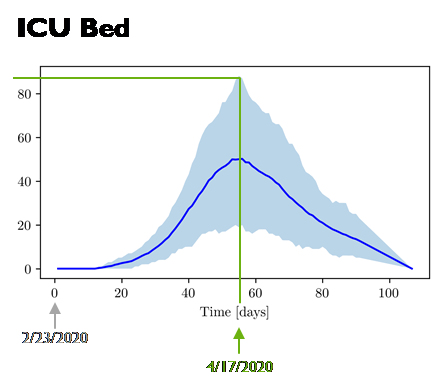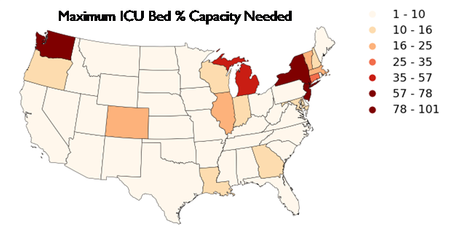As part of the Department of Energy response to the novel coronavirus pandemic of 2020, Sandia personnel developed a model to predict medical resources needed, including medical practitioners (e.g. ICU nurses, physicians, respiratory therapists), fixed resources (regular or ICU beds and ventilators), and consumable resources (masks, gowns, gloves, etc.)
Researchers in Center 1400 developed a framework for performing uncertainty analysis on the resource model. The uncertainty analysis involved sampling 26 input parameters using the Dakota software. The sampling was performed conditional on the patient arrival streams, which were derived from epidemiology models and had a significant effect on the projected resource needs.
Using two of Sandia’s High Performing Computing clusters, the generated patient streams were run through the resource model for each of 3,145 counties in the United States, where each county-level run involved 100 samples per scenario. Three different social distancing scenarios were investigated. This resulted in approximately 900,000 individual runs of the medical resource model, requiring over 500 processor hours on the HPCs. The results included mean estimates per resource per county, as well as uncertainty in those estimates (e.g., variance, 5th and 95th quantile, and exceedance probabilities). Example results are shown in Figures 1-2. As updated patient stream projections become available from the latest epidemiology models, the analysis can be re-run quickly to provide resource projections in rapidly changing environments.
For more information on Sandia research related to COVID-19, please visit the COVID-19 Research website.

